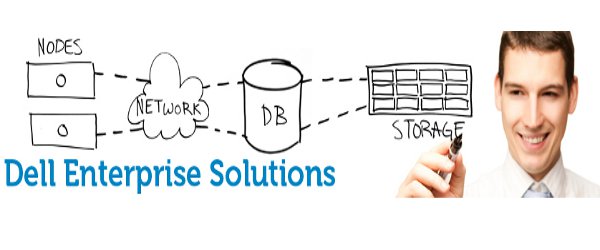
It seems like every man and his dog in the tech world is embarking the emerging technologies of cloud, BYOD and Big Data. Where companies differ is their take on these trends.
Sam Greenblatt, chief architecture and technology officer for Dell Enterprise Solutions, speaks to CBR about how Dell is responding to today’s tech trends and how Dell is growing different verticals into 2014.
The concept of cloud computing has become a buzzword. What substance does Dell put behind the cloud?
Cloud is defined by the company that wants the definition to fit the product. The concept that the world is running with the public cloud is the biggest misnomer in the market.
We believe public cloud is really good. The future lies in hybrid cloud, but hybrid cloud has one major problem: you have to move your data and that’s not a simple task. Where we see 85% of our customers going is private cloud, which is just a fancy word for managed services.
I am disillusioned with cloud but 80% of cloud providers are powered by Dell, so I love being an arms dealer to fight that war.
From a cloud perspective, we have all the components you need to make it work, from software all the way to hardware: we’ll give you everything you need.
How is Dell responding to the BYOD phenomenon?
BYOD is an end-user device that comes in [to a network]. If someone comes in with their own server, then I’d be worried. We know we can control what attaches to the network. If you know how to deal with anything that comes in through your network, you can deal with it effectively. So BYOD is more hype than anything else.
It’s just a device. You’ve got to protect the corporate data. I’m not saying I don’t believe in BYOD, I think it has to be controlled properly. Bigger problems are getting the capacity to the right people at the right time.
How is Big Data progressing and how is Dell utilising it?
We see Big Data coming in three waves: the first is predictive analytics, it’s going to grow. Then after that, phase two – advanced analytics, to the point where it’s predictive. [Thirdly] Prescriptive analytics – automatically notice a pattern; don’t have to run the programmes to find it. We think number three is very far away, but we’re working on number one with a lot of companies.
Big Data is really surprising in that it’s not just data, its video. 80% of the Internet today’s traffic is video. How do you do big data on video? What it means is you’ll have to take the image and break it down so you can see it. That’s really, cute but it will be nice when an image can be turned into real data and that’s something we’re looking to do with other companies.
Is Big Data changing the roles of data scientists and data miners?
The biggest problem with data scientists is what you call something and I call something is two different things: I call it a cookie, you call it a biscuit. The ability to create a taxonomy of words and relationships and the ability to draw the relationships. These aren’t data scientists, they are linguists. Then the people who are the data scientists are statisticians and so you need all this stuff to make Big Data work. It doesn’t work by magic.
Has Dell seen growth in any particular verticals?
The number one vertical is manufacturing: it has lagged behind everybody in computing and they’re catching up quickly and fast, they have to do it to be competitive. Financial services will always be an interesting area and is slightly up, but it’s not the biggest growth area. The next largest growth area is healthcare: it is changing dramatically as research is no longer done under a microscope but by computer monitoring. So we’re seeing a lot of growth, we don’t think we’re slowing down.
What does 2014 have in store for Dell Enterprise Solutions?
We’re going to focus on classics, legacy workloads and new workloads. We’re going to focus on server-centric computing and we’re going to continue to work with our customers to define their business needs for both our hardware and software.






